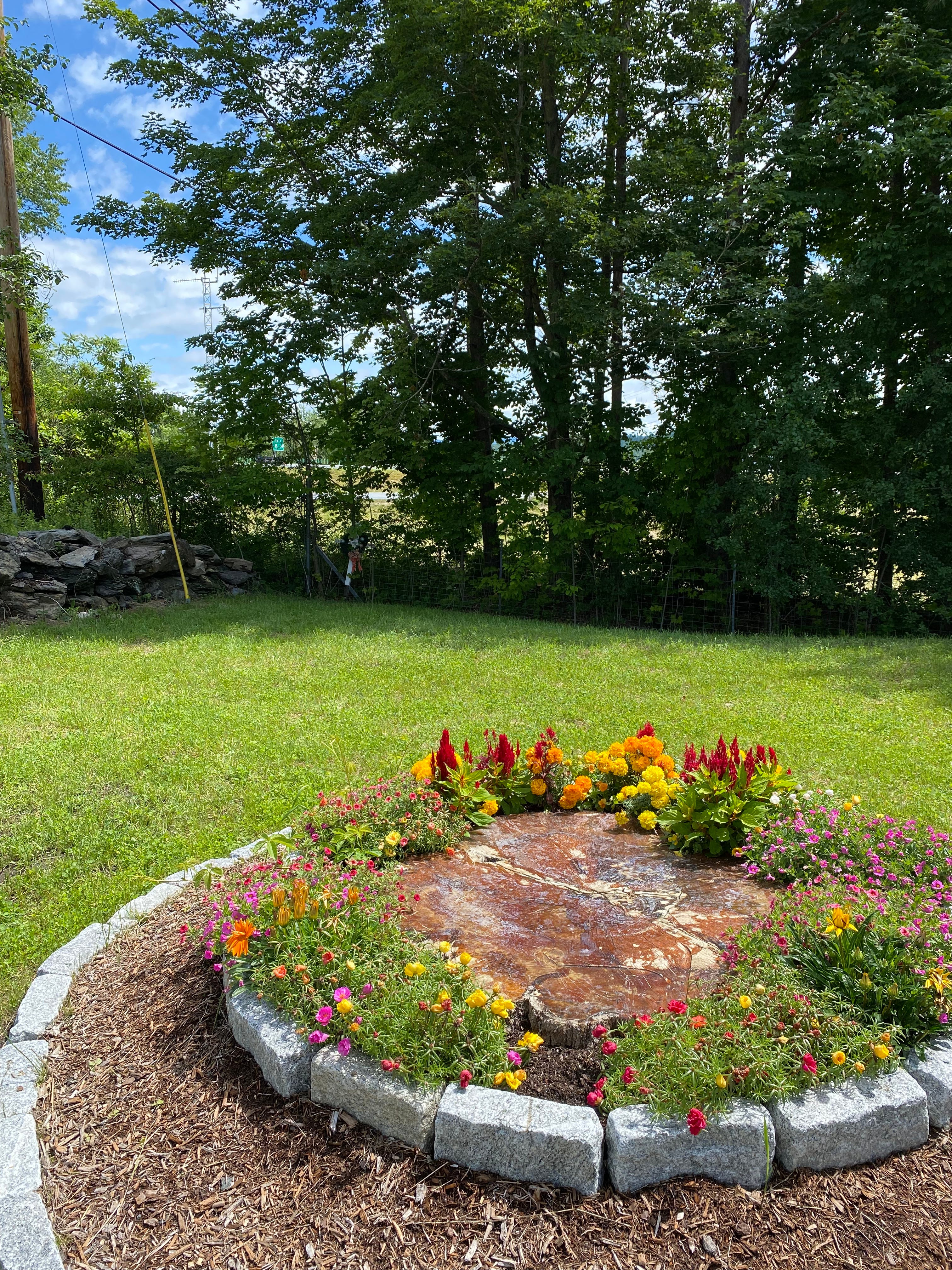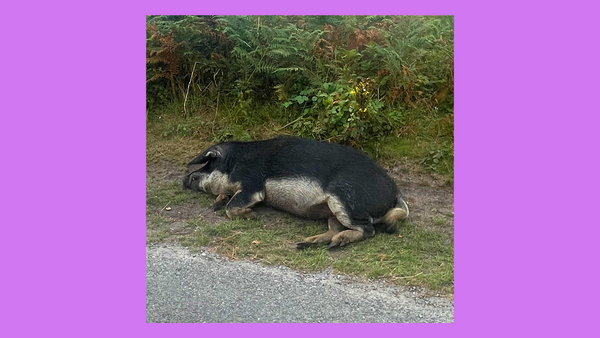The grave of Romaine Tenney
Thoughts on a tree stump in Weathersfield, Vermont.

About an hour and a half from my parents’ house, over the Green Mountains, is a Park & Ride in Weathersfield, Vermont. It’s right off Exit 8 on I-91, the longest New England Interstate highway, starting in New Haven and cutting up through Massachusetts and Vermont up into Canada. There aren’t a lot of highways in Vermont, or at least not traditional highways; it takes a long time to get anywhere because posted speed limits rarely crack 50 MPH, and cars often have to slow down as highways become village main streets, or as roads twist and turn through mountains and along rivers. But I-91 is a proper interstate, with two lanes in both directions, long and flat and endless.
To build I-91, Vermont had to take land from farmers and other residents up and down the eastern border, one of whom was Romaine Tenney, a dairy farmer whose land would eventually become Exit 8. Tenney did not sell his land to the state for the $13,600 offer, and in September of 1964, the state invoked eminent domain to move Tenney off his property. The night after the cops came to start moving Tenney’s things, Tenney let his animals go, set his buildings on fire, locked himself in his bedroom, and likely shot himself.
I’d never heard the story of Romaine Tenney before the New York Times wrote an article about him in May, despite growing up in Vermont and getting a full year of Vermont history in the fourth grade (though I understand why maybe this story is not appropriate for fourth graders). But I recognize the larger emblematic nature of it in experiences growing up, specifically watching people I knew to be progressive in their politics protest and fight against wind farms and for the closure of the Vermont Yankee Nuclear Power Plant. There’s a strong sense of NIMBYism here, an idea that the land and wildlife of Vermont is unique and must be preserved at all costs, even if that means fighting against something that would help protect planet Earth at large. This is perhaps a deep-seated, generational response to the fact that a little over 100 years ago, Vermont was over 80% deforested. Thanks to concerted conservation efforts, that number has now flipped, with 80% of the state now forested.
Tenney’s fight wasn’t NIMBYism—his suicide was less a protest against a highway and more a commitment to live and die on his plot of land—but it’s easy to read into his story, to add an ideological bent against state power, for conservation of a way of life, or against the idea of progress as religion. But when you read it most closely, Tenney’s is the story of a man whose way of life was already on the way out, highway or no highway, whose death marked an end to an era for his neighbors in Weathersfield. After his death, the state filled in Tenney’s cellar and built the highway, and eventually the Park & Ride, over his land. The last remnant of Tenney was a gnarled old tree, which died and was cut down, after much local protest, this spring. What’s left is a stump, surrounded by rings of stone and flowers, a memorial and de facto gravestone for Romaine Tenney, and by extension, the way things were.





